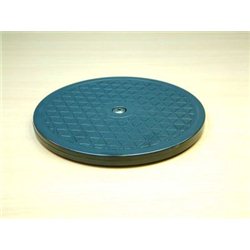If you are planning a model railway layout then you are likely making some crucial decisions, one of which will be...
No products
Product successfully added to your shopping cart
There are 0 items in your cart. There is 1 item in your cart.
Search Tips
What is a single action airbrush?
A single-action airbrush is a useful tool in scale modelling, especially if you're looking for a simple yet effective way to apply paint to your models. Unlike traditional brush painting, which can leave visible strokes and uneven finishes, airbrushing offers a smooth and even coat. If you're just getting into airbrushing, a single-action airbrush might be the perfect starting point, as it’s easy to use and doesn’t require as much practice as more advanced options.
The main feature of a single-action airbrush is that the trigger controls only the airflow, while the amount of paint is pre-set before you begin spraying. This means that once you’ve adjusted the paint flow to your liking, you can focus solely on applying the paint without needing to tweak it during the process. For larger areas, such as model aircraft or vehicles, this level of consistency can be a huge advantage, helping you achieve a uniform coat without interruptions.
However, it’s worth noting that a single-action airbrush is slightly less versatile when it comes to finer details. Because you can’t adjust the paint flow on the go, creating intricate lines or subtle shading can be more difficult compared to a double-action airbrush. That said, with practice and careful use of masking techniques, you can still achieve impressive detail and finish on your models, especially when working on base coats or larger sections.
If you're new to airbrushing, you'll also appreciate the simplicity of cleaning and maintaining a single-action airbrush. Since it has fewer moving parts, it’s easier to disassemble and clean thoroughly, which is crucial if you're using different types of paints like acrylics or enamels. Regular cleaning will prevent clogging and ensure the airbrush lasts longer, making it a reliable tool in your scale modelling kit.
Cost is another factor that makes a single-action airbrush appealing. They are generally more affordable than their double-action counterparts, which is perfect if you’re just starting out or don’t need advanced features. For a reasonable price, you can still achieve professional-looking results, particularly if you're painting larger surfaces or aiming for a smooth, even finish.
Overall, a single-action airbrush is an excellent choice if you're looking for a straightforward, reliable tool for your scale modelling projects. While it may not offer the flexibility for ultra-fine detail work, its ease of use, affordability and consistent performance make it ideal for beginners or modellers who want to take their painting to the next level. If you’re focused on improving your skills without getting bogged down by complicated features, this type of airbrush could be the perfect fit for your modelling needs.
Click here to receive the tips weekly in your mailbox. You can unsubscribe at any time.









